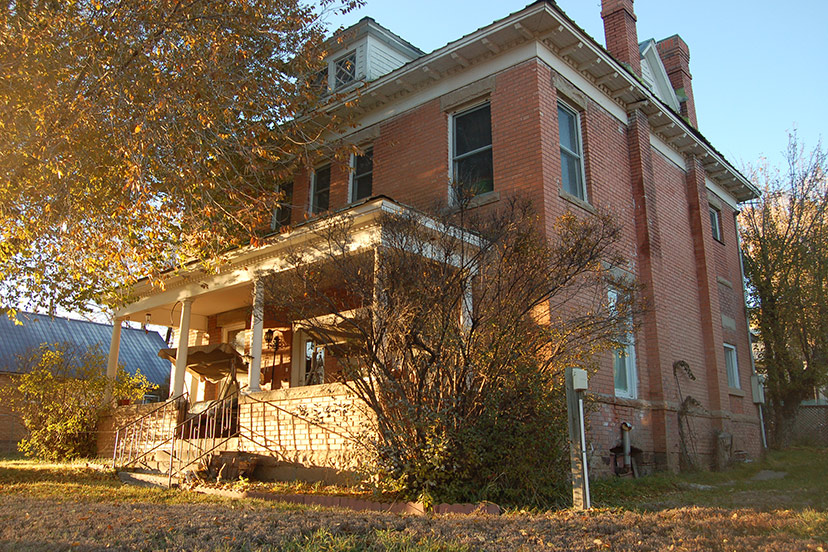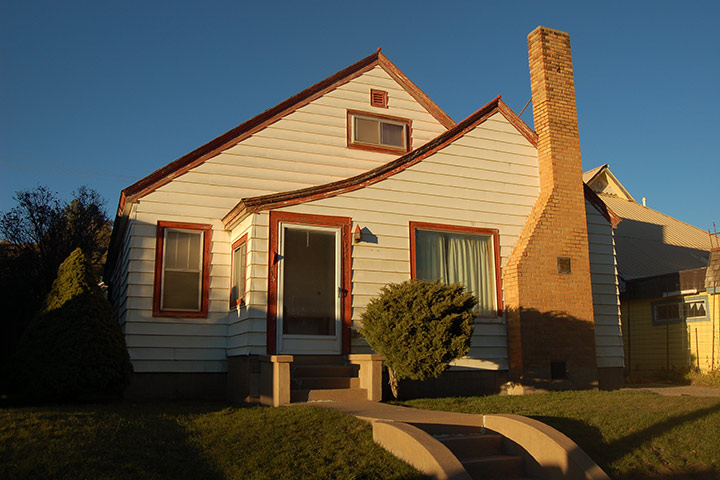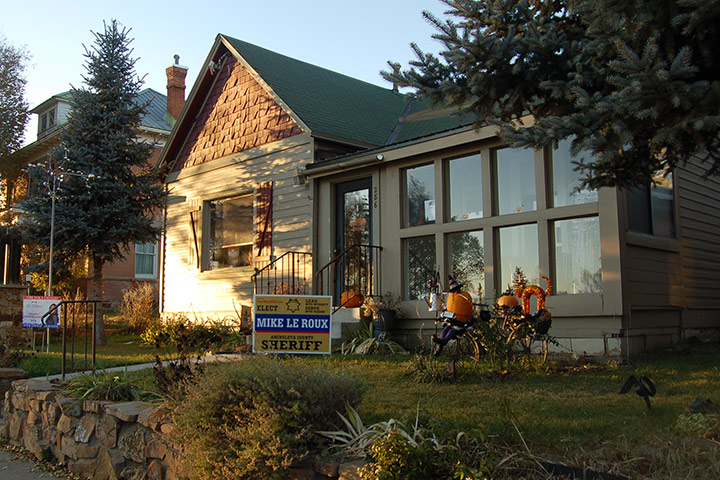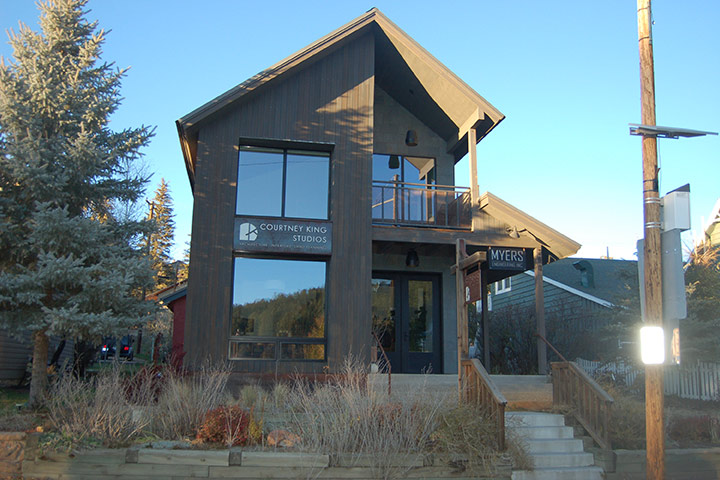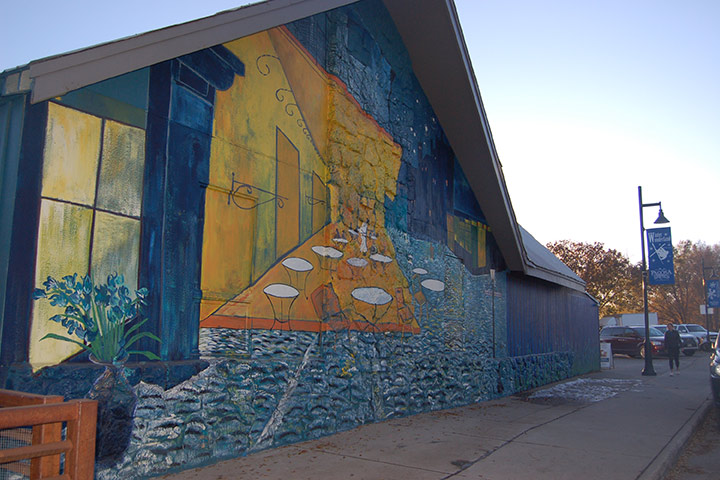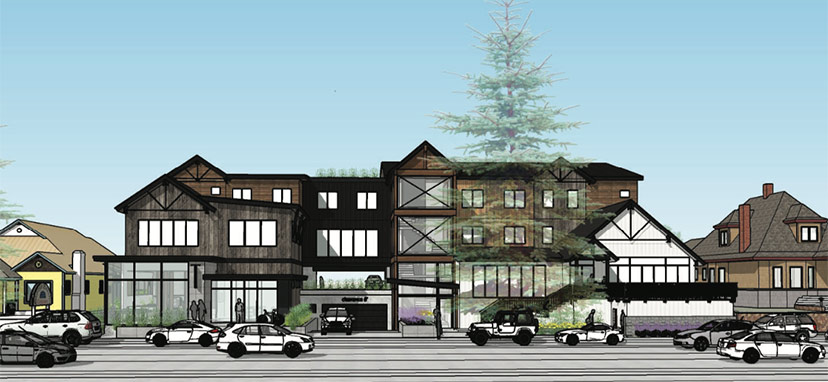The East Village area should maintain the traditional development patterns established by original residential uses in this neighborhood while accommodating adaptive reuse for commercial activities. New infill and redevelopment should respect adjacent development in mass and scale…
— from the Town of Pagosa Springs Downtown Master Plan.
The photo above shows the Archuleta Family house in Pagosa’s East Village, the once-residential neighborhood along Pagosa Street (aka Highway 160) east of the Middle School. The neighborhood has converted almost completely to commercial uses, but without making drastic changes to the neighborhood’s appearance. I believe the Archuleta family still lives in this house, and if so, it’s one of maybe two residential homes in the East Village still occupied by local residents.
Here’s another neighborhood home still occupied by local residents.
That’s about it, in terms of homes that are still functioning as homes.
Of the residential properties that have been converted to commercial uses over the past 30 years, we have a wide variety of choices in the East Village. For example:
The photo immediately above shows Riff Raff Brewing Company on the left and the mixed-use Towne Terrace on the right. The Towne Terrace was built in 2007, to replace a small residential home with a much larger, two-story building that includes several commercial spaces on the ground floor and condo units upstairs. I believe almost all of the condo units are now Short-Term Rentals.
As we can see in the photo, the Towne Terrace is not significantly more “massive” than the two-story Riff Raff building next door, which also has a commercial use downstairs (restaurant and brewery) and a Short-Term Rental unit upstairs.
Nor is the Towne Terrace significantly more massive than the two-story Humane Society Thrift Store across the street.
The Humane Society shop was never a residence, however. When I moved here in 1993, it was the Baptist Church, and it stood — and in fact still stands — three stories tall, counting from the Hermosa Street alley. But the basement floor is not apparent from Pagosa Street, so you might say it’s “mass” is hidden by the down-sloping topography.
But of course, no one expects a church to be the same size as a house. Churches have historically had a much greater “mass” than the surrounding residential homes, because a church is built to serve an entire neighborhood, at least one day of the week. And if the church becomes a thrift store, we would expect it to be a rather roomy thrift store.
Here’s one more photo of the 200 block in the East Village. This is a photo of the vacant lots west of the Alley House Restaurant — currently used as a parking lot for the restaurant
Since we’re discussing “mass” and scale” in this editorial series, we can note that the Towne Terrace significantly more “massive” than the Archuleta home shown at the top of this editorial.
I keep using the Towne Terrace as an example of “mass” and “scale” because it was originally designed by the architecture firm of Reynolds Ash and Associates.
The same folks who designed the controversial three-story mixed use building proposed for 232 Pagosa Street. The proposed building that has the neighborhood agitated over its “mass” and “scale”.
In Part One, we briefly discussed this proposed mixed-use building located just down the street from the Towne Terrace, at 232 Pagosa Street. The building is considerably larger than the Towne Terrace, and on the face of it, seems to violate the specifications in the Town’s official Downtown Master Plan, which call for new developments in this particular part of town to reflect the mass and scale of the existing neighborhood.
To repeat the quote from the Downtown Master Plan that began today’s editorial:
The East Village area should maintain the traditional development patterns established by original residential uses in this neighborhood while accommodating adaptive reuse for commercial activities. New infill and redevelopment should respect adjacent development in mass and scale…
We know that the architects at Reynolds Ash and Associates know how to respect adjacent development in mass and scale… because they did this, previously, with the Towne Terrace in 2007.
Has something changed since 2007?
Increased greed, perhaps? Less respect for the existing character of our neighborhoods? Something else?
Here is architect Brad Ash, explaining his perspective at last July’s Planning Commission review of an earlier version of the 232 Pagosa Street project, when the Commission sent the architects back to the drawing board.
“I’m a resident here for 41 years, for my entire life. I went away and came back. I think if we did a count, I think it’s nine or ten buildings that have been torn down or burnt down in Pagosa Springs. And if we’re blind to Pagosa Springs growing, and the people who are watching what is going on in town, I think you need to consider that Pagosa is discovered. We all know that it is.
“We all want it to grow ‘right’. We all want it to be the right way, but at the same time, it’s not ignoring what’s going on outside of Archuleta County. There’s huge growth. There’s big houses. There’s people with money. Expectations are rising, as they come to our community.”
Mr. Ash is, of course, correct. As wealthier people move into Archuleta County — and let’s face it, with home prices and building costs where they are currently, only wealthier people can afford to move here — “expectations” are changing, to suit those wealthier people.
Mr. Ash continued:
“So I’m just wanting to put that out there, these [kinds of projects] are going to be more in front of you. And considering what it takes to develop projects anymore, and for projects to even ‘pencil’… we’re not Durango, we’re not Telluride, we’re not some of these places where you’re getting ludicrous prices per square foot. This is a very difficult town to develop in…”
Mr. Ash is presumably referring to commercial rental properties, which have never quite recovered from the effects of the Great Recession in Pagosa, from 2008 through 2012. True, we’re not Durango or Telluride. Not yet.
Residential properties here, meanwhile, are reaping rather fabulous rents and sales prices — twice what were being demanded in 2012.
Mr. Ash continued:
“As these developers bring these projects in front of you, I know ‘budgets’ are not part of your considerations, but I think it’s to be considerate of what’s being proposed. I’m not necessarily saying that wasn’t done tonight, but be prepared for it, because there’s more coming.”
From my perspective, and perhaps from Mr. Ash’s perspective as well, the Town’s LUDC exists to prevent, or mitigate, the destruction of our town neighborhoods as we currently enjoy them. I don’t agree with everything written in the LUDC, however, and obviously Mr. Ash feels the same way, although for different reasons perhaps.
The Planning Commission and the Planning Department, meanwhile, are charged with making decisions consistent with the LUDC. Often, the LUDC regulations conflict with what developers believe will ‘pencil’.
The question then becomes, do we choose to preserve the character of our neighborhoods, or do we make development as convenient as possible for developers?
Some folks really want to see Pagosa explode with new projects, and become a very different place, to accommodate the “people with money” who, Mr. Ash claims, are destined to move into our town.
Some of us, on the other hand, really like the town we found when we moved here, or in some cases, the town we grew up in.
That town has already vanished, to a large degree. Can we save a bit of what still remains?

